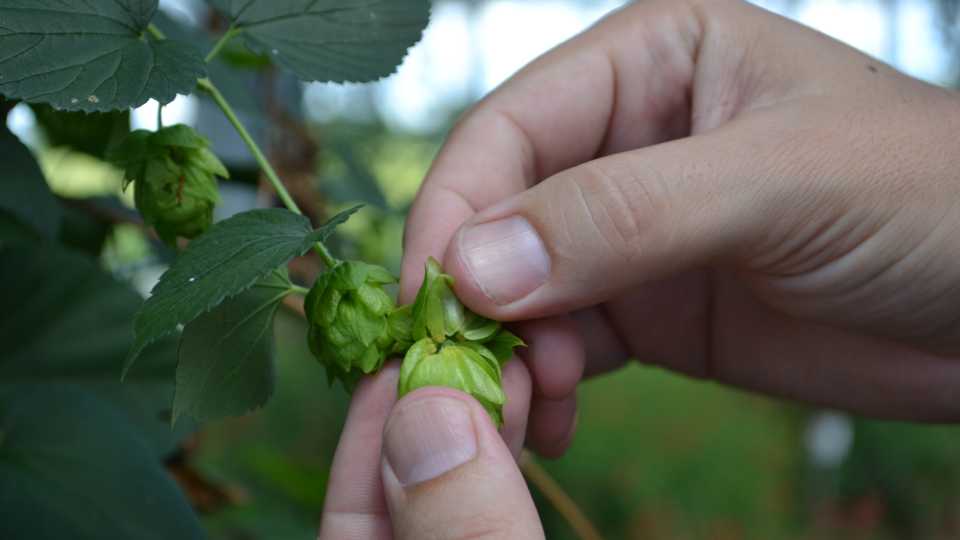Growth in Florida Hops Allowing Brewers To Hone Their Craft

Research on growing hops in Florida is beginning to mature. Local craft beer brewers and growers have been learning together the nuances of producing the alternative crop in Florida’s subtropical environment. Photo by Paul Rusnak
It’s encouraging to see crops — once considered “alternative” — grow into something bigger. That’s been the case with hops in Florida. I have been covering and reporting on the progress of this alternative crop since early 2016. Researchers at the University of Florida over that time have continued to pour efforts into making the main ingredient in beer a viable option for growers and local brewers over that time.
A hops field day was recently held at the UF/IFAS Gulf Coast and Research Center (GCREC) near Tampa. About 50 craft beer brewers and local growers were in attendance to learn the latest findings.
The hops grown at GCREC stem are rooted in about eight years of trial and error. In those years, UF/IFAS scientists Shinsuke Agehara and Zhanao Deng have led the project. They use LED lighting to grow hops twice a year. The artificial light tricks the crop into thinking daylight lasts longer than it really does.
Hops require about 15 hours of daylight before they flower. That’s why the crop generally grows better in the Pacific Northwest. At peak day-length in summer, Florida gets less than optimal daylight hours.
In addition to LED lighting, Agehara is seeking ways to maximize the productivity of hops in Florida’s subtropical climate. According to UF/IFAS, his program recorded 1,600 pounds of hops per acre in one year, which is almost the same yield as in the Pacific Northwest.
“What’s unique about Florida hops is that they have two growing seasons — unlike any other hop production regions,” Agehara says. “Florida growers may be able to produce a higher yield than the Pacific Northwest — if we can tailor the LED lighting and other horticultural practices according to plant growth habits and requirements in each season.”
RELATED CONTENT: 7 Myths, Realities, Successes, and Challenges for Florida Hops
Agehara also is trying to explore the environmental factors and farming practices that characterize the elusive quality of Florida hops — often referred to as “terroir” in wine. He hopes to add special values to hops grown in Florida’s unique climate and soil.
Lucas Frank of Hiatus Brewing in Ocala, FL, uses locally grown hops. In May, he released a new brew called ‘Pine Tar’, made with ‘Cascade’ hops grown at the GCREC. Attendees of the hops field day had a chance to sample it. “The name is an homage to the pale ales of the early American craft beer movement,” Frank says. “With our brew system and fermenters, we have to be creative when using the hops, to make sure we maximize their potential. With our fifth batch, we feel we have settled on the best way to use the hops and we are looking forward to the results.”










